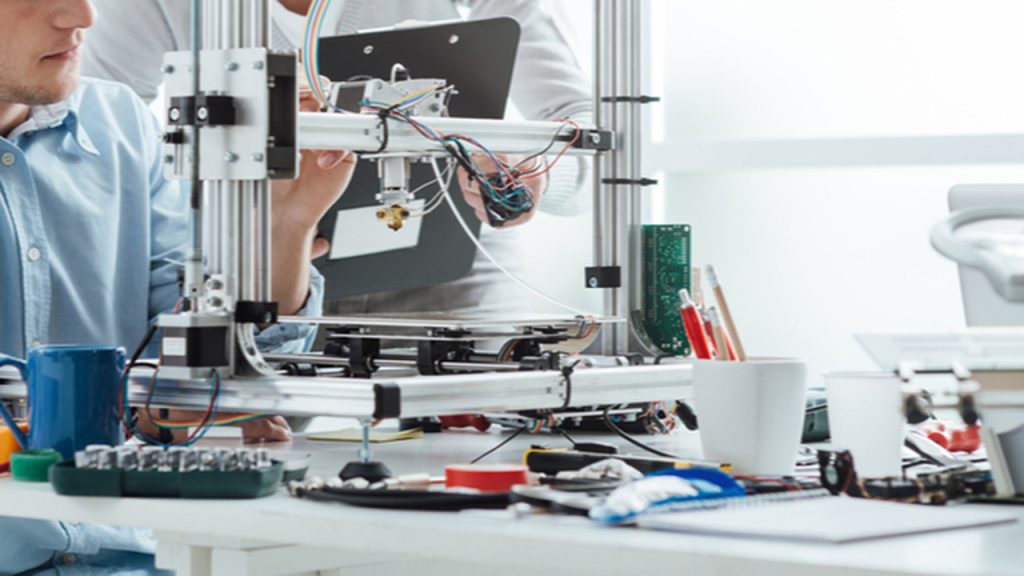Are you passionate about engineering education and curious about how to take it to the next level? Look no further! In this article, we will explore practical strategies on how to improve engineering education to better equip the next generation of engineers.

Photo by imeche.org
Current Challenges in Engineering Education
Engineering education faces several challenges in today’s rapidly changing world. One of the main challenges is keeping up with the advancements in the engineering field. As technology evolves, educational institutions need to ensure that their curriculum and teaching methodologies are up-to-date. This requires continuous research and development to incorporate the latest industry practices into the education system.
Another challenge is the lack of practical hands-on experiences for students. Engineering is a field that requires not only theoretical knowledge but also practical skills. Many engineering programs focus more on theory and less on practical application. This can leave graduates ill-prepared for the real-world challenges they will face in their careers.
Diversity and inclusion are important aspects that need to be addressed in engineering education. Historically, engineering has been a male-dominated field, and efforts need to be made to encourage more women and underrepresented groups to pursue engineering careers. This can be achieved by creating a more inclusive and supportive environment within educational institutions.
Importance of Improving Engineering Education
Improving engineering education is crucial for several reasons. Firstly, it ensures that graduates are industry-ready and equipped with the skills and knowledge needed to excel in their careers. By aligning the curriculum with industry needs, educational institutions can produce graduates who can immediately contribute to the workforce.
Secondly, improving engineering education fosters critical thinking and innovation. Engineering is a field that requires problem-solving skills and creativity. By incorporating project-based learning and practical experiences, students are encouraged to think outside the box and come up with innovative solutions to real-world problems.
Lastly, improving engineering education helps bridge the gap between academia and industry. By collaborating with industry partners, educational institutions can gain insights into the latest industry trends and practices. This collaboration can also provide students with valuable internship and job placement opportunities, giving them a head start in their careers.
Role of Technology in Enhancing Engineering Education
Technology plays a crucial role in enhancing engineering education. It allows for the integration of interactive and immersive learning experiences that can enhance student engagement and understanding. Virtual reality (VR) and augmented reality (AR) can be used to create virtual simulations of real-world engineering scenarios, allowing students to practice their skills in a safe and controlled environment.
Online learning platforms and resources also provide students with the flexibility to learn at their own pace and access a wide range of educational materials. This can be particularly beneficial for students who may not have access to engineering programs in their local area or who prefer self-paced learning.
In addition, technology can facilitate collaboration and communication among students and between students and educators. Online forums, video conferencing tools, and collaborative project management platforms enable students to work together on engineering projects, regardless of their geographical location.
By leveraging technology, engineering education can become more accessible, engaging, and effective in preparing students for the demands of the industry.
Incorporating Practical and Hands-on Learning Experiences
To enhance engineering education, it is essential to incorporate practical and hands-on learning experiences into the curriculum. Theoretical knowledge alone is not sufficient for success in the engineering field. Students need opportunities to apply their knowledge to real-world problems and gain practical skills.
One effective approach is project-based learning. Instead of solely relying on textbooks and lectures, students are given projects that require them to apply their knowledge to solve engineering problems. This not only enhances their technical skills but also fosters critical thinking, teamwork, and project management abilities.
Educational institutions can establish partnerships with industry organizations to provide students with internships, co-op programs, and industry projects. This allows students to gain valuable practical experience and exposure to real-world engineering challenges. Industry partnerships also provide insights into the latest industry practices and help bridge the gap between academia and industry.
Engineering schools can invest in state-of-the-art laboratories and facilities to provide students with hands-on experience with cutting-edge technology and equipment. This hands-on experience not only enhances their technical skills but also instills confidence and prepares them for the challenges they will face in their future careers.
By incorporating practical and hands-on learning experiences, engineering education can produce graduates who are well-prepared to tackle real-world challenges and make a meaningful impact in their chosen field.
Fostering Collaboration and Communication Skills in Engineering Education
Collaboration and communication skills are essential for success in the engineering field. Engineers often work in multidisciplinary teams, and effective collaboration and communication are crucial for project success.
To foster collaboration skills, engineering education should incorporate group projects and team-based activities. Students should be encouraged to work in teams, where they can learn to collaborate, delegate tasks, and communicate effectively. This not only enhances their technical skills but also develops their interpersonal and leadership abilities.
Engineering schools can organize workshops and seminars on effective communication and teamwork. These workshops can provide students with the necessary skills to communicate their ideas, present their work, and collaborate effectively with their peers and industry professionals.
In addition, the integration of online collaboration tools and platforms can facilitate communication and collaboration among students. Platforms such as Slack, Trello, and Google Docs allow students to collaborate on projects, share ideas, and provide feedback in real-time, regardless of their physical location.
By fostering collaboration and communication skills, engineering education can produce graduates who are not only technically proficient but also effective team players and communicators.
Addressing Diversity and Inclusion in Engineering Education
Diversity and inclusion are important aspects that need to be addressed in engineering education. Engineering has been a male-dominated field, and efforts need to be made to encourage more women and underrepresented groups to pursue engineering careers.
To address this issue, educational institutions should create a more inclusive and supportive environment for all students. This includes implementing policies and initiatives that promote diversity and inclusion, such as scholarships and mentorship programs targeted at underrepresented groups.
Engineering schools should actively recruit and hire diverse faculty members who can serve as role models and mentors for students from diverse backgrounds. Representation matters, and having diverse faculty can create a more inclusive learning environment and inspire students to pursue engineering careers.
Educational institutions should incorporate diversity and inclusion topics into the curriculum. This can be done through case studies, guest lectures from industry professionals, and workshops on unconscious bias and cultural competency. By exposing students to diverse perspectives, engineering education can prepare graduates to work in a global and diverse workforce.
By addressing diversity and inclusion in engineering education, we can create a more inclusive and equitable profession that benefits from a wider range of perspectives and experiences.
Continuous Professional Development for Engineering Educators
To improve engineering education, it is essential to invest in the continuous professional development of engineering educators. Educators need to stay up-to-date with the latest industry practices, teaching methodologies, and technological advancements to effectively prepare students for the demands of the industry.
Educational institutions can support the professional development of educators by providing opportunities for attending conferences, workshops, and training programs. These events allow educators to learn from industry experts, exchange best practices, and gain insights into the latest trends in engineering education.
Engineering schools can establish communities of practice, where educators can collaborate and share their experiences and knowledge. These communities can provide a platform for educators to learn from each other, discuss challenges and solutions, and stay connected with the latest developments in engineering education.
Educational institutions can encourage educators to engage in research and publication activities. Engaging in research allows educators to contribute to the body of knowledge in engineering education and stay at the forefront of advancements in the field.
By investing in the continuous professional development of engineering educators, educational institutions can enhance the quality of teaching and ensure that graduates are well-prepared for the ever-evolving engineering industry.
Engaging Industry Partnerships in Engineering Education
Engaging industry partnerships is crucial for improving engineering education. Collaboration with industry organizations provides valuable insights into the latest industry practices, trends, and technological advancements. It also provides students with opportunities for internships, co-op programs, and industry projects, giving them real-world experience and exposure to the challenges they will face in their careers.
To establish industry partnerships, engineering schools can reach out to local industries, professional associations, and alumni networks. These partnerships can take various forms, such as guest lectures, industry-sponsored projects, and mentoring programs. By involving industry professionals in the education process, students can gain a better understanding of the practical applications of engineering concepts and develop valuable industry connections.
Industry partnerships can provide funding for research projects, scholarships, and state-of-the-art equipment and facilities. This financial support enables educational institutions to enhance the learning environment and provide students with the resources they need to succeed.
By engaging industry partnerships, engineering education can bridge the gap between academia and industry, ensuring that graduates are not only technically skilled but also familiar with the latest industry practices and trends.
Case Studies of Successful Initiatives to Improve Engineering Education
Several successful initiatives have been implemented to improve engineering education. One such initiative is the Olin College of Engineering in Massachusetts, USA. Olin College focuses on project-based learning and hands-on experiences, with students working on real-world projects from their first year. This approach has resulted in graduates who are not only technically proficient but also innovative and entrepreneurial.
Another successful initiative is the CDIO (Conceive-Design-Implement-Operate) framework, developed by a consortium of leading engineering schools. The CDIO framework emphasizes the integration of engineering fundamentals with real-world projects and focuses on the development of engineering skills and professional competencies.
The University of Waterloo in Canada has implemented a co-op program, where students alternate between academic terms and paid work terms in industry. This program provides students with valuable work experience and helps them develop industry connections and a deeper understanding of the practical applications of engineering.
These case studies highlight the importance of incorporating practical experiences, industry collaborations, and innovative teaching methodologies in engineering education. By learning from these successful initiatives, educational institutions can transform their engineering programs and produce graduates who are well-prepared for the demands of the industry.
The Future of Engineering Education
Improving engineering education is crucial for equipping the next generation of engineers with the skills and knowledge needed to excel in their careers. By addressing current challenges, leveraging technology, incorporating practical experiences, fostering collaboration and communication skills, promoting diversity and inclusion, investing in continuous professional development, and engaging industry partnerships, engineering schools can create an environment that fosters critical thinking, innovation, and practical hands-on skills.
The future of engineering education lies in creating a learning environment that prepares students for the ever-evolving demands of the industry. By implementing these strategies, educational institutions can revolutionize engineering education and produce graduates who are not only technically proficient but also creative, adaptable, and ready to tackle real-world challenges.




